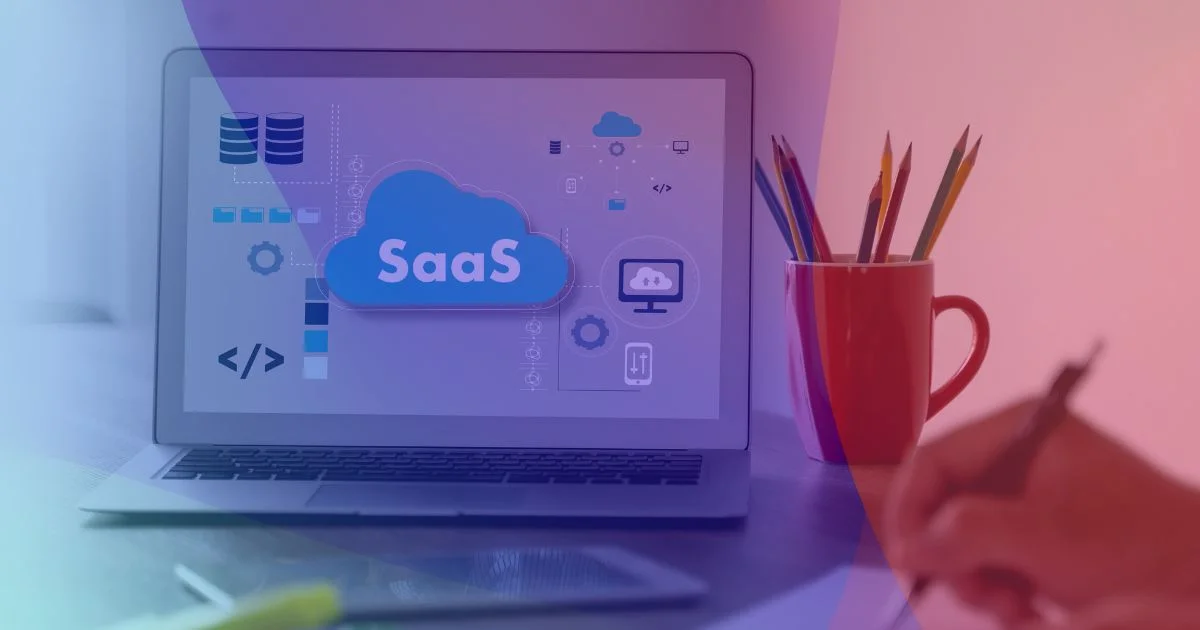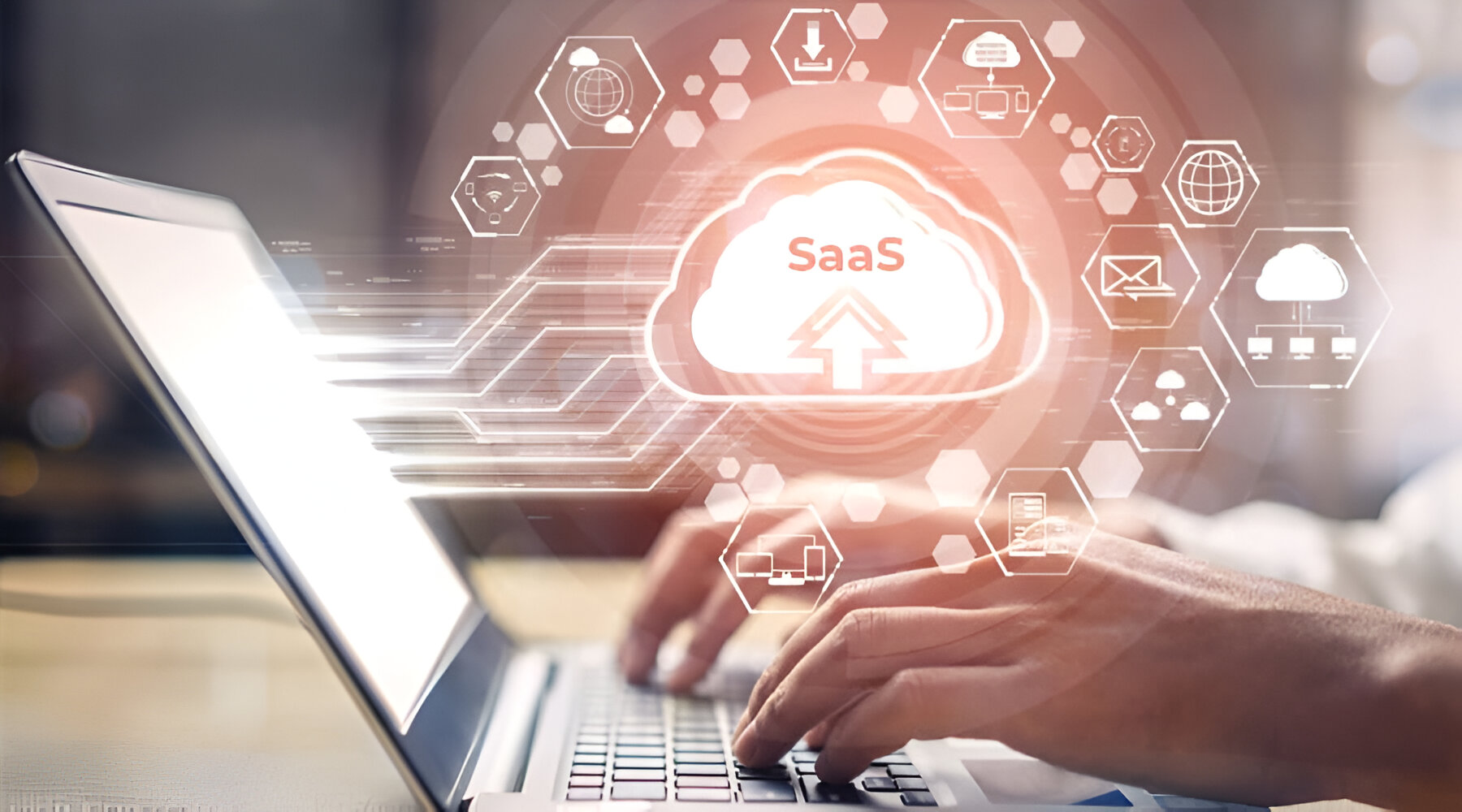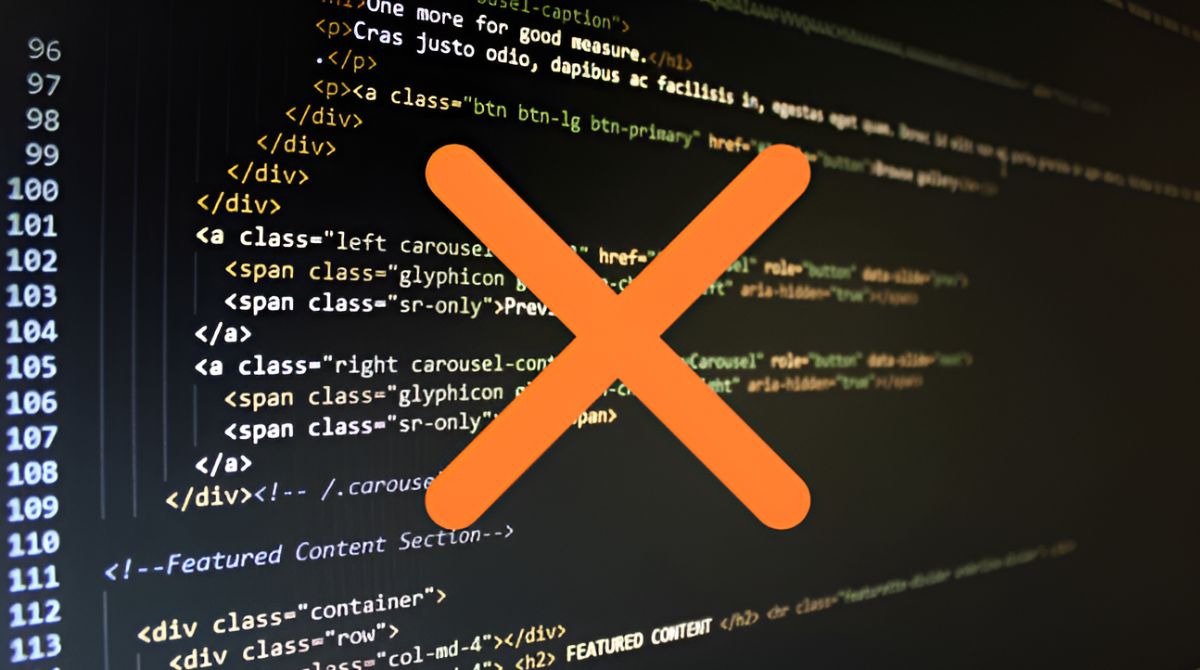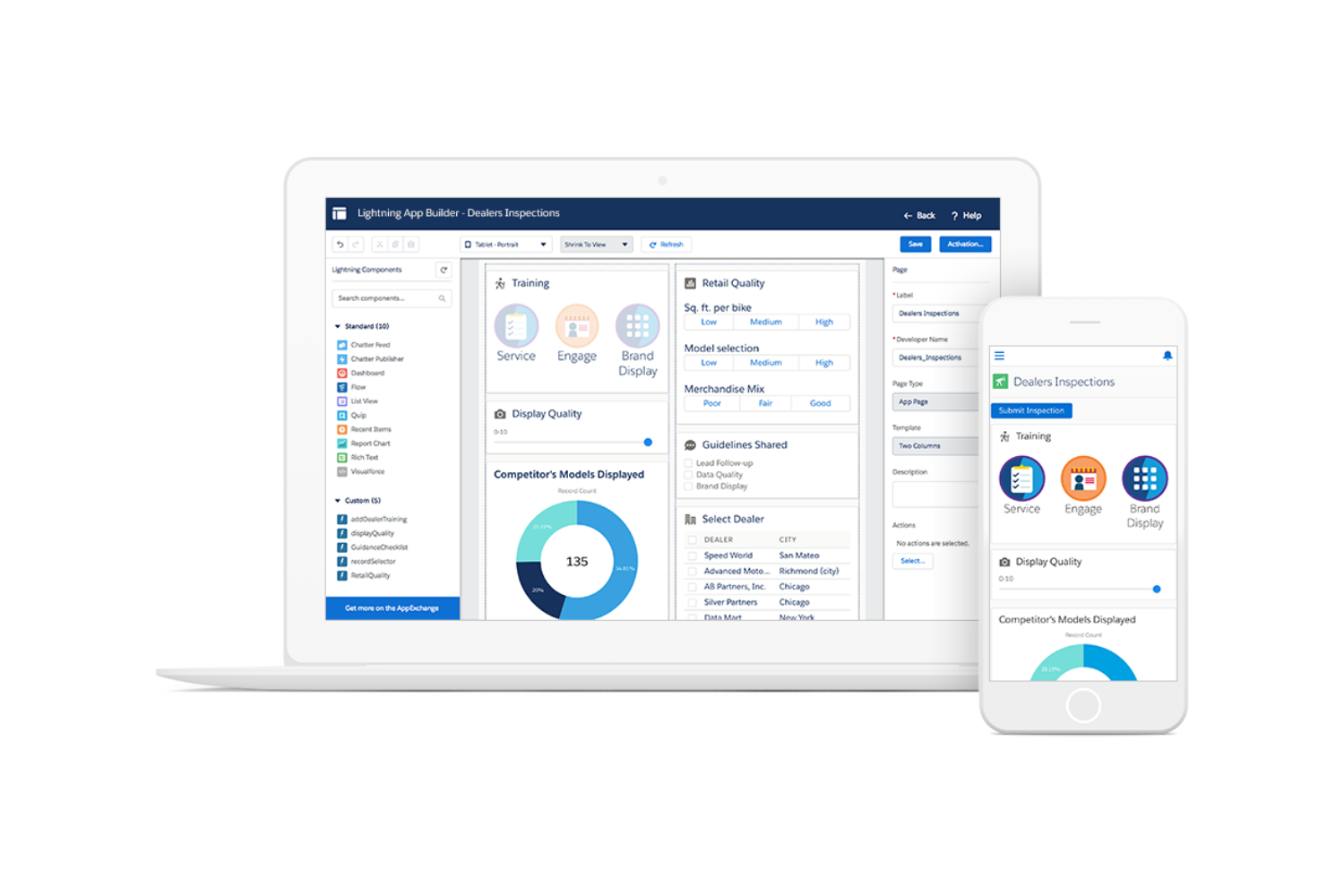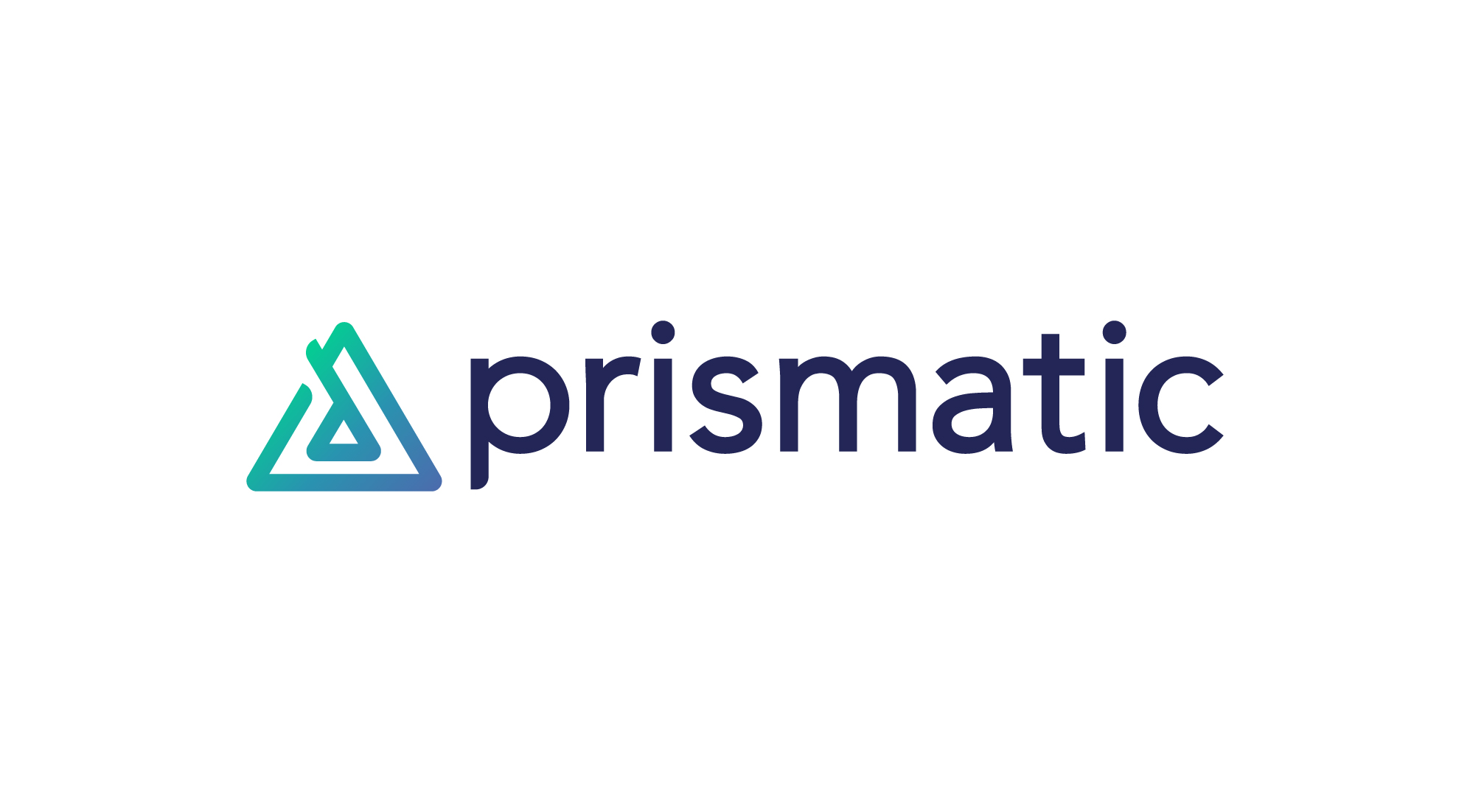Introduction
Welcome to our comprehensive guide on how to design SaaS software! In today’s digital era, Software as a Service (SaaS) has emerged as a popular solution for businesses of all sizes. SaaS offers the flexibility, scalability, and cost-effectiveness that traditional software models may lack. However, designing SaaS software requires careful consideration of user needs, functionality, user interface, security, scalability, and more.
In this article, we will dive deep into the process of designing SaaS software, providing you with valuable insights and practical tips. Whether you are an aspiring designer or an entrepreneur venturing into the SaaS industry, this guide will equip you with the knowledge to create a successful SaaS product.
We will begin by helping you gain a fundamental understanding of SaaS software. This includes exploring its benefits, characteristics, and unique considerations. Next, we will tackle the essential step of identifying user needs. Understanding your target audience and their pain points is crucial to ensuring your software meets their requirements.
Once user needs are identified, we can move on to defining the key features of your SaaS software. These features will form the foundation of your design and dictate the functionality of your product. We will also discuss the importance of creating an intuitive user interface that enhances the user experience.
While user experience is vital, backend infrastructure design plays a crucial role in ensuring your SaaS software performs optimally. We’ll delve into the considerations you need to make to guarantee scalability, performance, and maintainability. Additionally, we’ll explore best practices for implementing robust security measures to protect user data.
Throughout the article, we will emphasize the importance of testing and quality assurance to ensure reliable and bug-free software. We will also explore the concept of continuous development and deployment, enabling you to update your software seamlessly.
The journey does not end once your SaaS software is launched. We will discuss the significance of user feedback and iteration, allowing you to continuously improve your product based on user input.
Now that we’ve set the stage, let’s dive into the world of designing SaaS software and equip you with the knowledge and skills to create an exceptional product!
Understanding SaaS Software
Before diving into the intricacies of designing SaaS software, it’s crucial to have a solid understanding of what SaaS actually is. Software as a Service, or SaaS, is a software distribution model where applications are hosted by a service provider and made available to customers over the internet.
Unlike traditional software that requires installation and maintenance on individual devices, SaaS allows users to access and use software applications via a web browser or dedicated client. This eliminates the need for hardware investments and provides the benefit of seamless updates and maintenance conducted by the service provider.
One of the key advantages of SaaS software is its subscription-based pricing model. Instead of purchasing licenses outright, users pay a recurring fee to access the applications. This creates a more flexible and cost-effective solution for businesses, as they can adjust the number of licenses to match their needs without any significant upfront costs.
SaaS also offers scalability benefits. With traditional software, businesses often face challenges when experiencing rapid growth and need to invest in additional hardware and licenses. In contrast, SaaS software can scale up or down easily, allowing organizations to adapt to changing needs without incurring excessive costs.
Moreover, SaaS software offers the advantage of always being up-to-date. Service providers regularly roll out updates and new features, ensuring that users have access to the latest functionalities without the need for manual updates or disruptions.
However, designing SaaS software comes with its own unique considerations. As the software will be accessed over the internet by multiple customers, it’s crucial to prioritize security. Implementing robust security measures, such as encrypting data, securing user authentication, and protecting against potential cyber threats, is essential to gain user trust and maintain their confidential information.
Additionally, SaaS software must be designed with scalability and performance in mind. As the number of users and data increases, the software should be able to handle the growth without experiencing significant slowdowns or performance issues.
Understanding the fundamentals of SaaS software sets the stage for designing a product that meets the needs of your target audience. In the next section, we’ll explore the process of identifying user needs and how it influences the design of your SaaS software.
Identifying User Needs
One of the most critical steps in designing SaaS software is identifying the needs of your target users. Understanding your users’ pain points and requirements is crucial to creating a product that meets their expectations. Here are some strategies to help you effectively identify user needs:
1. Conduct Market Research: Start by conducting thorough market research to gain insights into your target audience. Understand their demographics, industry, and specific challenges they face. This research will provide you with a solid foundation for identifying user needs.
2. User Surveys and Interviews: Engage with your target users through surveys and interviews to gather their feedback and understand their pain points. Ask open-ended questions that encourage them to share their frustrations, desires, and expectations in relation to the software solution you are designing.
3. Analyze Competitors: Study your competitors and analyze their software offerings. Look for gaps or areas where their solutions are lacking, and try to uncover opportunities for improvement. This can help you identify areas where you can differentiate your product and meet unmet user needs.
4. Use Analytics and User Testing: Analyze user data through analytics tools to gain insights into user behavior and identify areas for improvement. User testing is another invaluable method to gather feedback from real users and observe how they interact with your software. This can help identify any usability issues or pain points that may need to be addressed.
5. Create User Personas: Develop user personas, which are fictional representations of your target users. These personas should include details such as demographics, goals, challenges, and preferences. This exercise helps you visualize your users and tailor your software design to meet their specific needs.
By diligently identifying user needs, you can align your software design with the expectations and requirements of your target audience. This understanding will guide the next step of defining key features for your SaaS software, ensuring that it solves their problems and provides value.
Defining Key Features
Once you have a clear understanding of the needs and preferences of your target users, the next step in designing SaaS software is defining the key features that will address those needs effectively. Here are some guidelines to help you define the essential features for your SaaS software:
1. Prioritize User Needs: Start by identifying the most critical pain points and requirements of your target users. These should be the focus of your feature set. Consider the specific tasks or challenges your users face and how your software can solve those problems efficiently.
2. Keep it Simple: While it can be tempting to add numerous features, it’s important to prioritize simplicity and usability. Complex software with an overwhelming number of features can confuse users and make the learning curve steeper. Strive for a clean and intuitive user experience by keeping the feature set concise and relevant.
3. Integrate Automation: Look for opportunities to automate tasks and processes within your software. Automation can save users time and effort, improving their overall experience. Identify repetitive actions that your software can streamline, reducing manual inputs and increasing efficiency.
4. Scalability and Customization: Ensure that your software can scale along with your users’ needs. Provide customization options that allow users to tailor the software to their specific requirements. This flexibility enhances the value of your product and makes it more adaptable to different businesses and industries.
5. Integration with Existing Tools: Consider how your SaaS software can integrate with other popular tools that your target users may already be using. Seamless integration enhances productivity and reduces friction for users who rely on multiple applications to complete their work.
6. Real-Time Collaboration: If suitable for your software, incorporate collaborative features that enable real-time collaboration among users. This can be beneficial in team-centric industries, allowing users to work together efficiently, share information, and provide feedback seamlessly.
7. Analytics and Reporting: Include built-in analytics and reporting features that provide users with valuable insights into their data. This empowers them to make informed decisions and track the performance of their business or processes. Visualizations and customizable reporting options can enhance the usability of these features.
Remember, while it’s essential to have a solid set of features, it’s equally important to maintain a user-centric approach. Continuously gather feedback from users and iterate on the feature set to ensure your software remains relevant and aligned with their evolving needs.
User Interface Design
User interface (UI) design plays a crucial role in the success of your SaaS software. A well-designed and intuitive UI enhances the user experience, increases productivity, and boosts user satisfaction. Here are some key considerations for designing an effective UI for your SaaS software:
1. Consistency: Maintain visual consistency throughout your software by using a consistent color scheme, typography, icons, and layout. Consistency helps users navigate the interface easily and establishes a sense of familiarity, making the software more intuitive to use.
2. User-Friendly Navigation: Design a clear and easy-to-use navigation system. Organize information logically and minimize the number of clicks required to access important features. Consider incorporating dropdown menus, breadcrumbs, or a sidebar navigation to enhance user efficiency.
3. Responsive Design: Optimize your UI for different devices and screen sizes. With users accessing SaaS software from a variety of devices, including desktops, laptops, tablets, and mobile phones, ensure that your UI adapts and provides an optimal experience across all platforms.
4. Clear Information Hierarchy: Design your UI with a clear information hierarchy, ensuring that important elements and actions stand out. Use visual cues such as size, color, and placement to guide users’ attention and prioritize essential information or actions.
5. Error Prevention and Feedback: Minimize the likelihood of user errors by including validations and providing real-time feedback. Clearly communicate any errors or validation issues, and offer suggestions or solutions to rectify them. This helps users understand and resolve errors quickly, reducing frustration.
6. Use of White Space: Utilize white space strategically to enhance visual clarity and improve the overall user experience. Adequate white space helps to declutter the interface, making it easier for users to focus on the essential elements and improve readability.
7. Intuitive Forms and Inputs: Design forms and input areas to be user-friendly and intuitive. Use clear labels, placeholders, and tooltips to guide users when entering information. Incorporate input validation to ensure data accuracy and assist users in providing the required information.
8. Accessibility: Consider accessibility guidelines to ensure that your SaaS software is usable by individuals with disabilities. This includes providing alternative text for images, using appropriate color contrast, and designing for keyboard navigation.
9. User Testing and Feedback: Validate your UI design through user testing and gather feedback from real users. This allows you to identify any usability issues or pain points and make necessary improvements. Pay attention to user feedback and iterate on the UI design to enhance the overall user experience.
Remember, a well-designed user interface goes beyond aesthetics. It should prioritize usability, efficiency, and intuitive interactions to provide the best possible experience for your users. By investing time and effort into crafting an exceptional UI, you can differentiate your SaaS software and delight your users.
Prioritizing Functionality
When designing SaaS software, it’s crucial to prioritize functionality to ensure that your product meets the needs of your target users effectively. Prioritizing functionality involves determining which features and capabilities are essential and delivering them in a way that maximizes their impact. Here are some key considerations for prioritizing functionality:
1. Identify Core Features: Start by identifying the core features that form the foundation of your SaaS software. These features should directly address the pain points and requirements of your target users. Focus on delivering these core functionalities in a robust and user-friendly manner.
2. Must-Have vs. Nice-to-Have: Distinguish between must-have features and nice-to-have features. Must-have features are essential for your software to function effectively and meet the basic needs of users. Nice-to-have features, while valuable, can be considered for future iterations or updates.
3. User Feedback and Market Trends: Incorporate user feedback and consider market trends to inform your decisions about functionality prioritization. User feedback helps you understand what features are crucial to users and what may be missing from the current version of your software. Market trends help you stay competitive by incorporating industry-standard features or addressing emerging needs.
4. Complexity vs. Simplicity: Consider the complexity of implementing certain features and weigh it against the simplicity of the overall user experience. While advanced features can be appealing, they may also add unnecessary complexity that could overwhelm or confuse users. Strive for a balance between functionality and ease of use.
5. Efficiency and Performance: Prioritize features that enhance efficiency and improve performance for users. Identify tasks or processes that involve repetitive actions or manual work, and focus on automating or streamlining those processes. This can save users time and effort, enhancing their overall experience with your software.
6. Scalability: Ensure that the chosen functionality aligns with your scalability goals. As your user base grows, your software should be able to handle increased demand without experiencing significant performance issues. Prioritize functionality that supports scalability and can adapt to evolving user needs.
7. User Research and Iteration: Continuously conduct user research and iterate on your software to align functionality with changing user needs. Regularly gather feedback from users, analyze data, and make adjustments to your feature set. This iterative approach allows you to deliver functionality that resonates with users and consistently adds value.
Prioritizing functionality effectively is a continuous process that requires a deep understanding of your target users and their pain points. By aligning your feature set with their needs and delivering essential functionalities in a user-friendly manner, you can create a SaaS software that stands out and resonates with your audience.
Backend Infrastructure Design
The backend infrastructure of your SaaS software is vital for its performance, scalability, and reliability. A well-designed backend ensures that your software can handle user demands, securely manage data, and seamlessly deliver functionality. Here are key considerations for backend infrastructure design:
1. Scalability and Performance: Plan your backend infrastructure to handle high user demands and accommodate future growth. Consider using scalable technologies, such as cloud services, that can dynamically adjust resources based on demand. Employ caching mechanisms and optimize database queries to improve performance.
2. Data Management and Storage: Determine how your software will store and manage user data. Select a reliable database management system that can handle the expected data volumes and easily scale as needed. Implement backups and disaster recovery mechanisms to safeguard valuable user information.
3. APIs and Integration: Design your backend to support APIs (Application Programming Interfaces) that allow seamless integration with third-party services or tools. Well-designed APIs enable your customers to extend the functionality of your software and connect with other applications they rely on for their business processes.
4. Security Measures: Implement robust security measures to protect user data and ensure the confidentiality and integrity of your software. Encrypt sensitive data, implement secure user authentication mechanisms, and regularly update security protocols to address potential vulnerabilities.
5. Authentication and Authorization: Design a reliable authentication and authorization system to control user access to your SaaS software. Utilize secure authentication protocols and implement role-based access control to ensure that users only have access to the functionality and data that they are authorized to use.
6. Error Handling and Logging: Implement error handling mechanisms and logging functionalities to track and analyze system errors or abnormalities. Proper error handling allows you to identify and resolve issues quickly, enhancing the stability and performance of your software.
7. Monitoring and Analytics: Incorporate monitoring tools and analytics to gain insights into your software’s performance and usage. Track key performance indicators, such as response times and resource utilization, to identify potential bottlenecks or areas for optimization. Analyze user behavior data to understand how your software is being used and make informed decisions for future enhancements.
8. Compliance and Regulations: Consider any industry-specific compliance requirements or regulations when designing your backend infrastructure. Ensure that your software adheres to relevant privacy laws, data protection regulations, or industry-specific standards to maintain user trust and avoid legal issues.
By carefully designing and implementing a robust backend infrastructure, you can ensure that your SaaS software performs optimally, securely manages user data, and supports seamless integration with other systems. A well-designed backend provides a solid foundation for your software’s success.
Security Considerations
When designing SaaS software, security is of paramount importance to safeguard user data and protect against potential cyber threats. Implementing strong security measures is crucial to gaining user trust and ensuring the longevity of your software. Here are key security considerations to prioritize:
1. Data Encryption: Implement robust encryption protocols to protect sensitive data both during transit and at rest. Utilize industry-standard encryption algorithms to ensure that user data remains confidential and secure.
2. Secure Authentication: Implement a secure authentication system to ensure that only authorized users can access your SaaS software. Utilize strong password policies, multi-factor authentication, and secure session management to prevent unauthorized access.
3. User Permissions and Access Control: Implement granular user permissions and access control mechanisms to ensure that users have the appropriate level of access to data and functionality. Use role-based access control (RBAC) to restrict user privileges and prevent unauthorized actions.
4. Regular Security Updates: Keep your software and underlying infrastructure up to date by installing security patches and updates regularly. Regular updates address known vulnerabilities and ensure that your SaaS software remains secure against emerging threats.
5. Secure APIs: If your software utilizes APIs for integrations with other services, ensure that your APIs are secure. Implement authentication and authorization mechanisms to control access to your APIs, and utilize secure communication protocols to protect data exchanged between your software and external systems.
6. Ongoing Security Audits and Penetration Testing: Conduct regular security audits to identify potential vulnerabilities and weaknesses in your software. Perform penetration testing to simulate real-world attacks and uncover any vulnerabilities that could be exploited by malicious actors.
7. Data Backup and Disaster Recovery: Implement robust data backup and disaster recovery mechanisms to ensure that user data is protected and can be restored in the event of data loss or system failure. Regularly test your backup and recovery procedures to verify their effectiveness.
8. Employee Training and Awareness: Educate your employees on best security practices and establish security protocols within your organization. Promote awareness of phishing attacks, social engineering, and other common security threats to minimize the risk of human error that can compromise the security of your software.
9. Compliance with Regulations: Ensure that your SaaS software adheres to relevant data protection regulations, industry-specific compliance requirements, and privacy laws. Stay updated on changes to regulations and proactively implement necessary measures to maintain compliance.
By incorporating these security considerations into your SaaS software design, you can create a robust and secure system that protects user data and builds trust with your customers. Prioritize security throughout the development process to establish a strong foundation for the long-term success of your software.
Scalability and Performance
Scalability and performance are crucial considerations when designing SaaS software. Your software must be capable of handling increasing user demands and data volumes without sacrificing performance and user experience. Here are key factors to prioritize when addressing scalability and performance:
1. Scalable Infrastructure: Design your software using a scalable infrastructure that can handle growth and increasing user demands. Utilize cloud-based services and technologies such as auto-scaling to dynamically allocate resources based on demand. This ensures that your software can handle increased traffic and data without compromising performance.
2. Efficient Resource Management: Optimize resource management to maximize performance and efficiency. Efficiently utilize CPU, memory, and storage resources to ensure optimal response times and minimize cost. Employ caching mechanisms to reduce the need for redundant calculations or data retrievals.
3. Load Testing: Perform load testing to assess your software’s performance under heavy user loads. This helps identify potential bottlenecks or performance issues and allows you to fine-tune your infrastructure and code to handle increased concurrent users effectively.
4. Horizontal and Vertical Scaling: Plan for both horizontal and vertical scaling options. Horizontal scaling involves adding more servers or instances to distribute the load, while vertical scaling involves increasing the capacity of individual servers or instances. Determine the appropriate scaling strategy based on your software’s requirements and expected user growth.
5. Database Optimization: Optimize database performance by employing techniques such as indexing, query optimization, and database caching. Properly designed database schemas and efficient query execution improve performance and enable your software to handle increasing data volumes efficiently.
6. Asynchronous Processing: Utilize asynchronous processing to handle resource-intensive or time-consuming tasks. Offloading tasks to separate background processes or services allows your software to maintain responsiveness and ensure a seamless user experience.
7. Monitoring and Alerting: Implement proactive monitoring and alerting systems to quickly identify performance issues. Monitor key performance indicators such as response time, latency, and resource utilization to ensure optimal performance. Set up alerts to notify system administrators of any anomalies or performance degradation.
8. Optimized Code and Algorithms: Write clean and optimized code to improve the overall performance of your software. Use efficient algorithms and data structures to minimize computation time and memory usage. Regularly analyze and refactor code to identify areas for optimization.
9. High Availability and Redundancy: Implement high availability by designing your software to have redundancy and failover mechanisms. Distributed architecture, load balancing, and backup servers can ensure uninterrupted service even in the event of hardware or software failures.
By prioritizing scalability and performance considerations, you can ensure that your SaaS software can handle increasing user demands, data volumes, and maintain optimal performance. Continuous monitoring, testing, and optimization are crucial to ensuring the longevity and success of your software.
Testing and Quality Assurance
Testing and quality assurance are vital components of designing SaaS software. Thorough testing ensures that your software meets the highest standards of quality, functionality, and reliability. Here are key considerations for testing and quality assurance:
1. Test Planning and Strategy: Develop a comprehensive test plan that outlines the testing approach, test objectives, and test coverage. Define test cases and scenarios to validate all aspects of your software, including functionality, performance, security, and user experience.
2. Functional Testing: Conduct functional testing to ensure that all features and functionalities of your software work as intended. This includes validating user inputs, verifying outputs, and testing different user scenarios to ensure the software behaves correctly in each case.
3. Performance Testing: Perform performance testing to assess your software’s response times, throughput, and resource utilization under varying loads and stress levels. This helps identify any performance bottlenecks, memory leaks, or other issues that may impact the overall performance of your software.
4. Security Testing: Conduct rigorous security testing to assess the vulnerability of your software to potential cyber attacks. This includes testing for common vulnerabilities, such as injection attacks, cross-site scripting (XSS), and cross-site request forgery (CSRF). Penetration testing should also be performed to simulate real-world attacks and identify potential weaknesses in your software’s defenses.
5. Usability Testing: Evaluate the usability and user experience of your software through usability testing. Involve real users to assess their interaction with the software and gather feedback on its ease of use, intuitiveness, and overall user satisfaction. This helps identify any usability issues and allows for iterative improvements to enhance the user experience.
6. Compatibility Testing: Verify that your software works effectively across different browsers, operating systems, and devices. Test compatibility with various versions and configurations to ensure a consistent experience for all users. This includes testing on different screen sizes, resolutions, and devices such as desktops, laptops, tablets, and mobile phones.
7. Regression Testing: Perform regression testing after making updates or adding new features to ensure that existing functionalities have not been affected. This involves retesting previously tested functionalities to ensure they continue to work as expected. Automated regression testing can help streamline this process and ensure that critical functionalities are not broken during software updates.
8. Continuous Integration and Deployment: Implement continuous integration and deployment (CI/CD) processes to automate the testing and release of new software versions. This helps ensure that each software update goes through a series of automated tests before being deployed, reducing the chances of introducing bugs or issues into the production environment.
9. Error and Exception Handling: Implement robust error and exception handling mechanisms to gracefully handle unexpected issues. Proper error handling provides informative error messages and logs to aid in debugging and troubleshooting, making it easier to identify and resolve issues.
By prioritizing testing and quality assurance, you can ensure that your SaaS software meets the highest standards of quality, reliability, and security. Regular testing and iterative improvements based on user feedback and testing results are key to delivering a superior software product to your users.
Continuous Development and Deployment
Continuous development and deployment (CD/CI) is a crucial practice in designing SaaS software. It enables you to deliver frequent updates, enhancements, and bug fixes to your users, ensuring that your software remains up-to-date and competitive. Here are key considerations for implementing continuous development and deployment:
1. Version Control: Adopt a version control system, such as Git, to track and manage changes to your software’s source code. Version control allows for collaboration among team members, enables efficient code review, and provides a historical record of changes made to the software.
2. Automation: Automate various aspects of the development and deployment process to minimize manual errors and streamline workflows. This includes automated testing, code reviews, build processes, and deployment pipelines. Automation enables faster and more reliable software releases while reducing the likelihood of human errors.
3. Continuous Integration (CI): Implement continuous integration, which involves regularly merging code changes from multiple developers into a shared repository. With CI, each code change is automatically validated by running automated tests to ensure that the code remains functional and does not introduce any regressions.
4. Continuous Deployment (CD): Implement continuous deployment to automate the release of software updates to production environments. With CD, software updates pass through automated tests and quality checks before being deployed. This allows for rapid deployment, reduces the chances of introducing bugs, and allows you to respond quickly to user feedback and market demands.
5. Agile Development Practices: Embrace agile development methodologies, such as Scrum or Kanban, to enable iterative development and collaboration. Agile methodologies promote regular communication, flexibility, and adaptability, allowing your team to deliver incremental updates and respond to changing requirements effectively.
6. Monitoring and Feedback Loops: Implement monitoring systems to gain insights into the performance and usage of your software. Track key metrics, such as response times, error rates, and user behavior to identify areas for improvement. Incorporate feedback loops with users and stakeholders to gather insights and prioritize development efforts.
7. Rollback and Rollforward Strategies: Plan and implement strategies for rolling back or rolling forward software updates if issues arise. This allows you to quickly revert to a stable version or apply fixes and updates seamlessly, reducing downtime and minimizing the impact on users.
8. Collaboration and Communication: Foster a collaborative and communicative environment within your development team. Encourage regular communication, knowledge sharing, and transparency among team members. Use collaboration tools to facilitate effective communication and collaboration remotely, if necessary.
9. Continuous Improvement: Embrace a culture of continuous learning and improvement. Encourage team members to share and learn from their experiences, conduct retrospectives to identify areas for improvement, and consistently refine your development and deployment processes.
By implementing continuous development and deployment practices, you can accelerate the delivery of new features and enhancements to your users while maintaining a high level of quality and reliability. This agile approach allows your software to evolve and adapt to the changing needs of your users and the market.
User Feedback and Iteration
User feedback and iteration are critical components of designing SaaS software. By actively seeking and incorporating user feedback, you can continuously improve your software, enhance the user experience, and meet the evolving needs of your users. Here are key considerations for gathering user feedback and implementing an iterative approach:
1. Feedback Channels: Establish multiple channels for users to provide feedback, such as feedback forms, customer support channels, user forums, or user surveys. Make it easy for users to share their thoughts, suggestions, and concerns. Actively listen to and acknowledge user feedback to foster a sense of trust and engagement.
2. Usability Testing: Conduct usability testing with real users to observe how they interact with your software. Usability testing allows you to gather direct feedback on the ease of use, intuitiveness, and overall user satisfaction. Observe users performing specific tasks and note any pain points or areas of improvement.
3. User Interviews: Engage in one-on-one interviews with selected users to gain deeper insights into their experiences, challenges, and needs. Interviews provide a valuable opportunity to ask open-ended questions and uncover valuable feedback that may not be obtained through other feedback channels.
4. Data Analytics: Leverage data analytics tools to analyze user behavior and gather quantitative insights into how users interact with your software. Track key metrics such as user adoption rates, user engagement, feature usage, and user retention. This data can guide decision-making and help prioritize areas for improvement.
5. Prioritizing Feedback: Carefully evaluate user feedback and prioritize it based on its impact and alignment with your product vision. Identify recurring themes or pain points raised by multiple users and address them accordingly. Prioritizing feedback ensures that you focus on the most impactful improvements for your users.
6. Release Small Iterations: Adopt an iterative development approach by releasing smaller, incremental updates rather than waiting for a large, significant release. This allows you to gather user feedback and make quick iterations based on that feedback. Regularly communicate and update users on the changes or enhancements made based on their feedback.
7. User Feedback Loop: Establish a feedback loop with your users by actively seeking their input on proposed features, designs, or changes. Involve users in the decision-making process and incorporate their insights early on. This not only helps validate your ideas but also creates a sense of ownership and buy-in from your users.
8. Continuous Improvement: Embrace a culture of continuous improvement. Regularly analyze user feedback, data, and metrics to identify trends and areas for enhancement. Actively seek opportunities to address user pain points and implement iterative improvements. Continuously refining and enhancing your software based on user feedback allows you to deliver a product that evolves and meets the needs of your users.
9. Communication and Transparency: Maintain open and transparent communication with your users. Keep them informed about updates, enhancements, and features in the pipeline. Share how their feedback has influenced the development process and highlight the value you place on their input. Proactively address user concerns and keep them engaged in the software’s evolution.
By actively gathering user feedback and implementing an iterative approach, you can create a SaaS software that aligns closely with the needs and expectations of your users. This continuous improvement cycle enhances user satisfaction, fosters user loyalty, and ensures your software remains valuable and relevant in a constantly evolving market.
Conclusion
Designing SaaS software is a complex and dynamic process that requires careful consideration of user needs, functionality, user interface, security, scalability, and performance. By following the key principles and strategies outlined in this guide, you can create a successful SaaS product that meets the expectations of your target users.
We started by understanding the fundamentals of SaaS software, including its benefits and unique considerations. With this foundation, we then moved on to identifying user needs through market research, user surveys, and competitor analysis. This understanding of user needs informed the process of defining key features that address those needs effectively.
User interface design plays a crucial role in enhancing the user experience, and we explored the importance of consistency, user-friendly navigation, and responsive design. Backend infrastructure design is vital for performance, scalability, and security, and we discussed the need for scalable infrastructure, secure data management, and integration capabilities.
Security considerations are critical to protect user data and maintain user trust. We emphasized the importance of encryption, secure authentication, and regular security updates. Scalability and performance are essential for a successful SaaS software, and we highlighted the significance of efficient resource management, load testing, and database optimization.
Testing and quality assurance ensure that your software meets the highest standards of quality, functionality, and reliability. We explored different types of testing, such as functional, performance, security, and usability testing, and stressed the need for continuous improvement through regular iterations.
Continuous development and deployment practices allow for rapid delivery of updates and enhancements. By embracing version control, automation, and agile methodologies, you can streamline the development and deployment process. Gathering user feedback and incorporating it into iterative improvements ensures that your software evolves to meet the changing needs of your users.
In conclusion, designing SaaS software requires a holistic approach that considers the needs of your users, the functionality of your product, the user experience, security, scalability, performance, and continuous improvement. By following the best practices outlined in this guide, you can create a SaaS software that not only meets user expectations but also stands out in a competitive market, ultimately leading to the success and longevity of your product.







